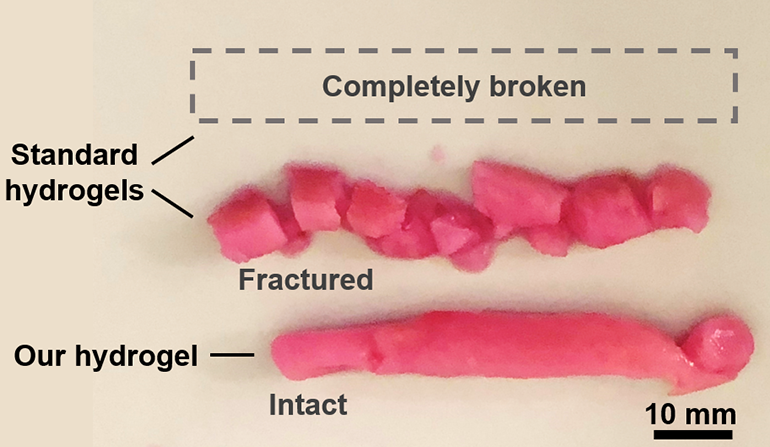McGill University researchers have developed a robust hydrogel that can withstand mechanical forces in the body. However, the material still provides a friendly environment for encapsulated cells to grow and enables deep perfusion of blood and other tissue fluids. The injectable biomaterial can be useful in repairing tissues that are exposed to constant mechanical stress, such as the heart, skeletal muscles, and vocal cords.

“People recovering from heart damage often face a long and tricky road. Healing is challenging because the tissues have to withstand constant movement when the heart is beating. The same goes for the vocal cords. Until now, there has not been an injectable material that was strong enough for this task, ”said Guangyu Bao, one of the leading developers of the new material, in an announcement from McGill. “The results are promising and we hope that one day the new hydrogel will be used as an implant to restore the voice of people with damaged vocal cords, such as survivors of larynx cancer.”
Injectable biomaterials are at the forefront of regenerative medicine, with the potential for minimally invasive delivery through a needle and regenerative efficacy achieved with encapsulated cells, drugs, or growth factors. A key factor in the design and performance of such materials is their porosity. High porosity allows blood to penetrate the material to keep encapsulated cells alive and allows secreted or loaded growth factors or drugs to escape from the gel and mediate therapeutic effects in surrounding tissues.
However, high porosity can affect the mechanical strength of the biomaterial, which means that it does not last in the target tissue for long periods of time. This is a major challenge in particularly dynamic tissues such as muscles or vocal cords, where constant movement adds stress and wear and tear, which leads to the breakdown of the biomaterial bolus.

This latest injectable hydrogel contains a double network of crosslinked fibers, essentially two intertwined, interpenetrating networks that help increase gel strength but maintain the porosity required for regenerative medical applications.
To test the strength of the material, the researchers placed it in a device that mimicked the biomechanical forces experienced by the vocal cords when speaking. The device vibrated 120 times per second for six million cycles, and the gel material was still largely intact afterwards, while other gel formulations were destroyed by the mechanical destruction.
“We were incredibly excited that it worked perfectly in our test. Prior to our work, no injectable hydrogel had high porosity and toughness at the same time. To solve this problem, we added a pore-forming polymer to our formula, ”said Guangyu Bao.
“Our work underscores the synergy of materials science, mechanical engineering and biotechnology in the development of novel biomaterials with unparalleled performance. We look forward to transferring them to the clinic, ”added Professor Jianyu Li, another researcher involved in the study.
Watch a video demonstration of the mechanical test bench below.
Studies in Advanced Science: Injectable, pore-forming, perfusable double network hydrogels that withstand extreme biomechanical stimulation
Above: McGill University
